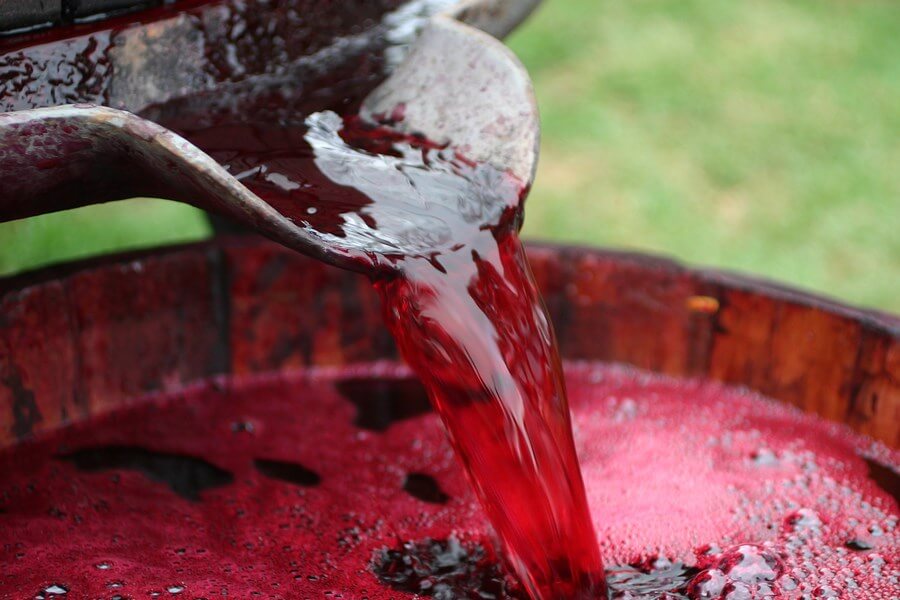If you read the brief “Message in a Bottle” about wine pesticide residue, published in April 2008 by PAN Europe, you may never drink wine again.

Share this article
The report on wine pesticide residue states that; out of 40 wine bottles analyzed for pesticide residue, 100% of the samples tested positive. Furthermore, it classified the properties of the pesticide residue as carcinogenic, reprotoxic and endocrine disruptor.
Ultimately, the brief raised many questions about the safety of consuming wine. But, is there cause for alarm?
Wine Pesticide Residue
According to CVUA Stuttgart, conventionally grown wine grapes are one of the crops extensively treated with pesticides. In fact, a survey of pesticide residue in wine conducted in Switzerland showed that; out of 176 conventionally produced wine samples tested, 95% contained wine pesticide residue. In contrast to 41.4% of 70 organic wine samples tested.
The grapevine is an extremely delicate crop susceptible to disease and pest attacks. In effect, these attacks can destroy the whole vineyard, result in minimal yields or poor quality wine. Therefore, conventional vineyards use chemical pesticides while organic and biodynamic farms use other methods, to protect the vines. Hence, growing healthy grapes and producing quality wine.
Throughout the planting season, conventional vineyards use pesticides. Consequently, varieties of pesticides remain in the grape and turn into wine pesticide residue. In fact, fungicides are the largest contributors of pesticide residue. Because fungicides are applied to the vines, to curb fungi attack on the grape towards the harvest.
Even so, not all pesticides find their way to the wine. Certain pesticides dissipate before the grapes are ready for harvest due to their short shelf life while others remain in the grape seeds and stems.
Wine Pesticide Levels
The pesticide levels in the grape depend on the application rate, the concentration of the pesticide and time between spray and harvest. Similarly, wine pesticide levels rely on the pesticide levels in the grape and the winemaking process. Because the pesticide levels in grapes reduce significantly during the drying, pressing and fermentation processes.
The European Union and The United States have set the maximum residue levels (MRLs) of pesticide residue in grapes, but not in wine. Accordingly, in The United States, The Alcohol and Tobacco Tax and Trade Bureau (TTB) uses the acceptable MRLs for grapes as the maximum allowable wine pesticide levels. Therefore, Europe and The United States, carry out regular testing of wine to determine the wine pesticide levels.
out of 300 French wine from the 2009 and 2010 vintages, 90% tested positive for traces of pesticide residue
Wine without Pesticides
Food safety concerns have increased over the years due to the increase of globalization in the food industry. Consequently, the regular consumer wants to know how the farming practice affects the final product. The concern is not limited to fruits and vegetables only, but has grown to products such as wine.
As a result, regulatory bodies are continually carrying out tests on wine, in a bid to reassure consumers. In 2013, Decanter reported that out of 300 French wine from the 2009 and 2010 vintages, 90% tested positive for traces of pesticide residue, though the levels were not toxic. This report emphasizes that the pesticide residue in wine is insignificant and poses no health risk. However, consumers want to buy wine without pesticide residue or with extremely low pesticide residue.
Currently, studies show you can only avoid wine pesticide residue by drinking organic or biodynamically produced wine. According to a survey by CVUA Stuttgart wine made from exclusively organically grown wine grapes contained either no detectable residues or only tiny amounts of pesticide residues (less than 0.01mg/kg). However, other studies have shown that you could still get pesticide residue in organic and biodynamic wines. As a result of contamination of organic vineyards through chemical drift from pesticides used in conventional grape farming.
Therefore, avoid contaminated wine by checking for certification labels on wine bottles. The USDA Organic Seal is on bottles found in The United States, while in Europe, they have the European logo. These logos guarantee among other things, that the ingredients used to produce the wine are 100% organic. Also, if you seek to buy biodynamic wine, make sure that it has The respekt-LOGO, which guarantees that the wine meets the high-quality standards set by the Demeter Association and production was biodynamically.
Conclusion:
Ultimately, regulating the amount of pesticide residue in wine is of great importance to many wineries and wine growing countries. Most are moving away from using chemical pesticides while others are reducing their dependency on using them. For example, a winery like Miguel Torres in Chile has not used chemical pesticides for the last 25 years. And, in New Zealand, the country has set industry standards to help promote the minimum use of pesticides in wine growing regions. By and large, these measures may not eliminate pesticide residue in wine entirely, but they will go a long way in minimizing the residue amount in wine.